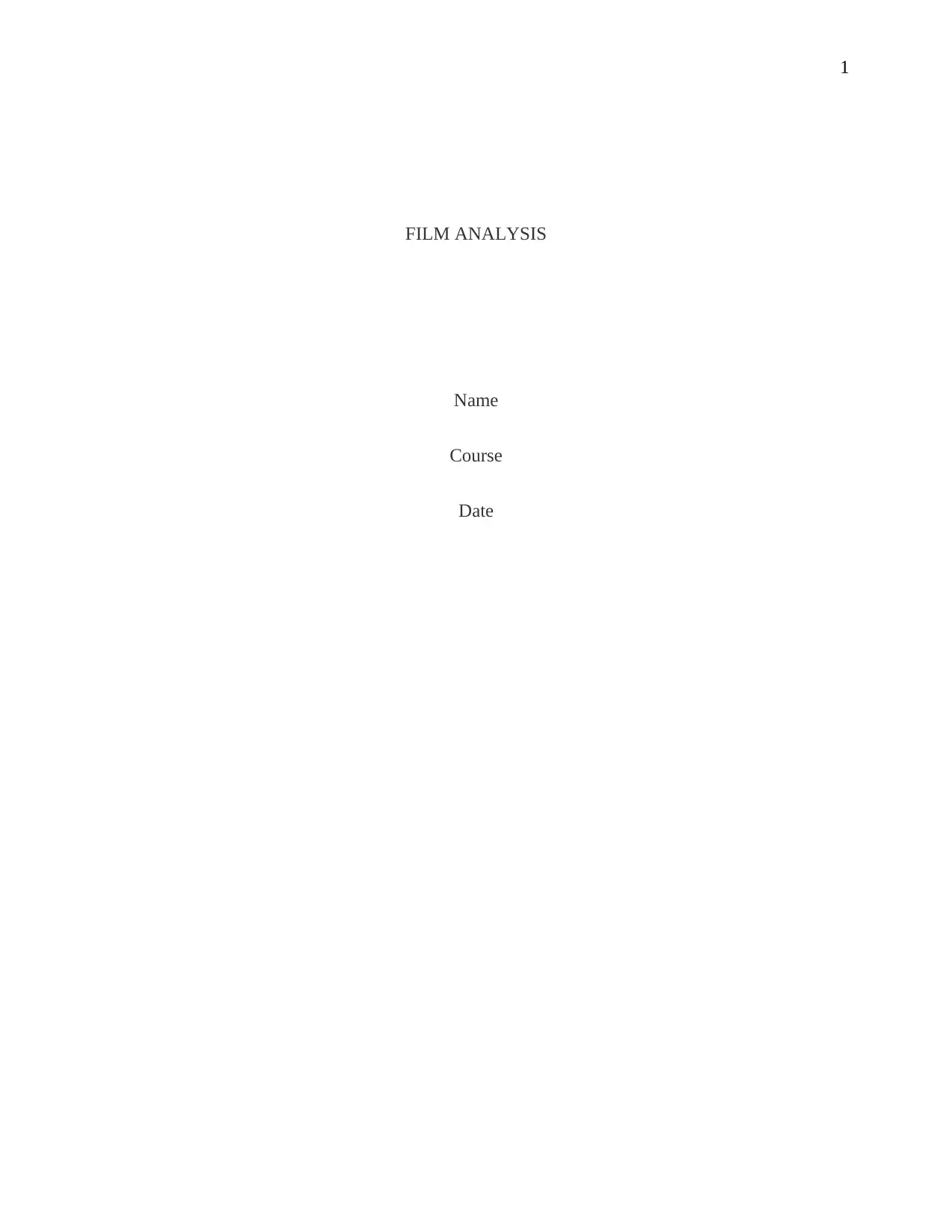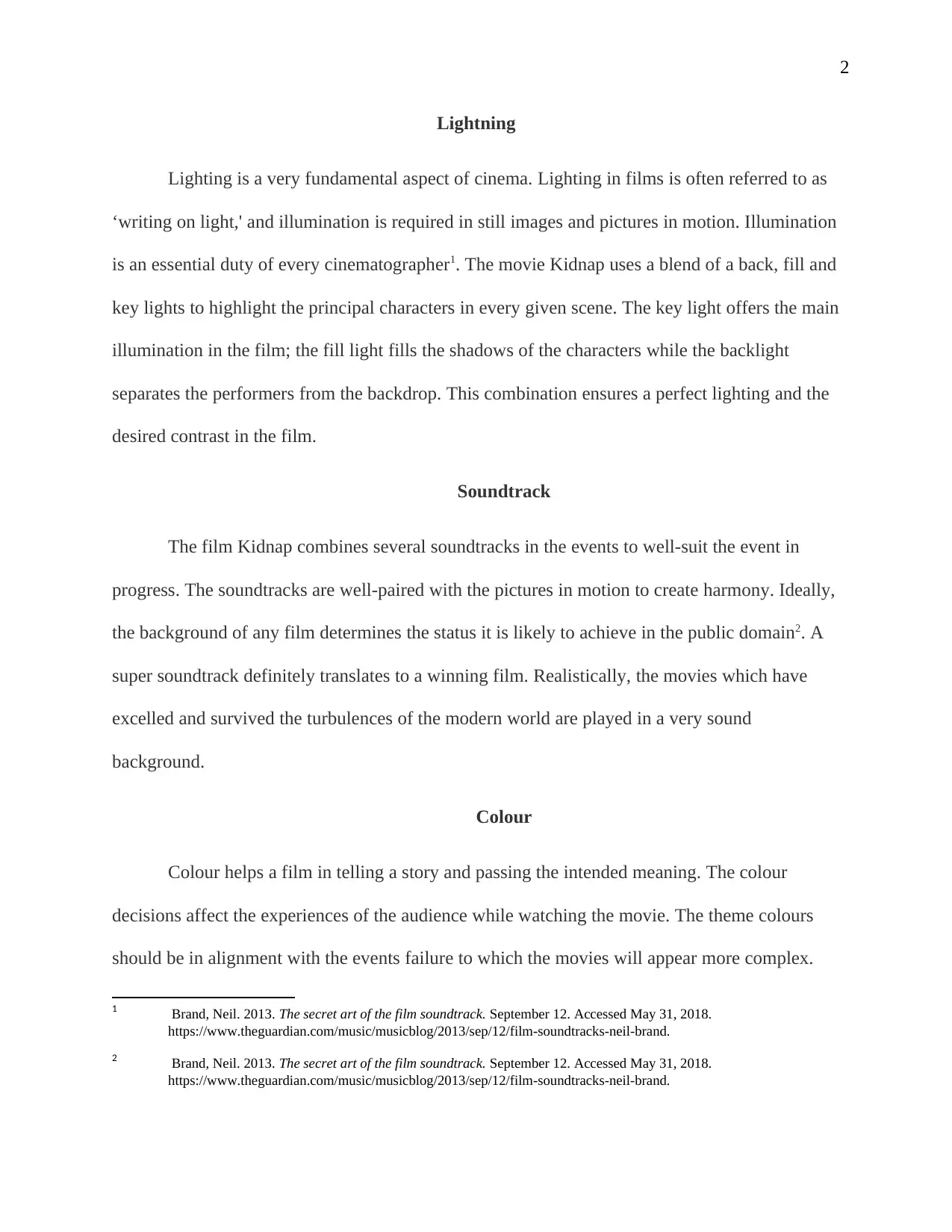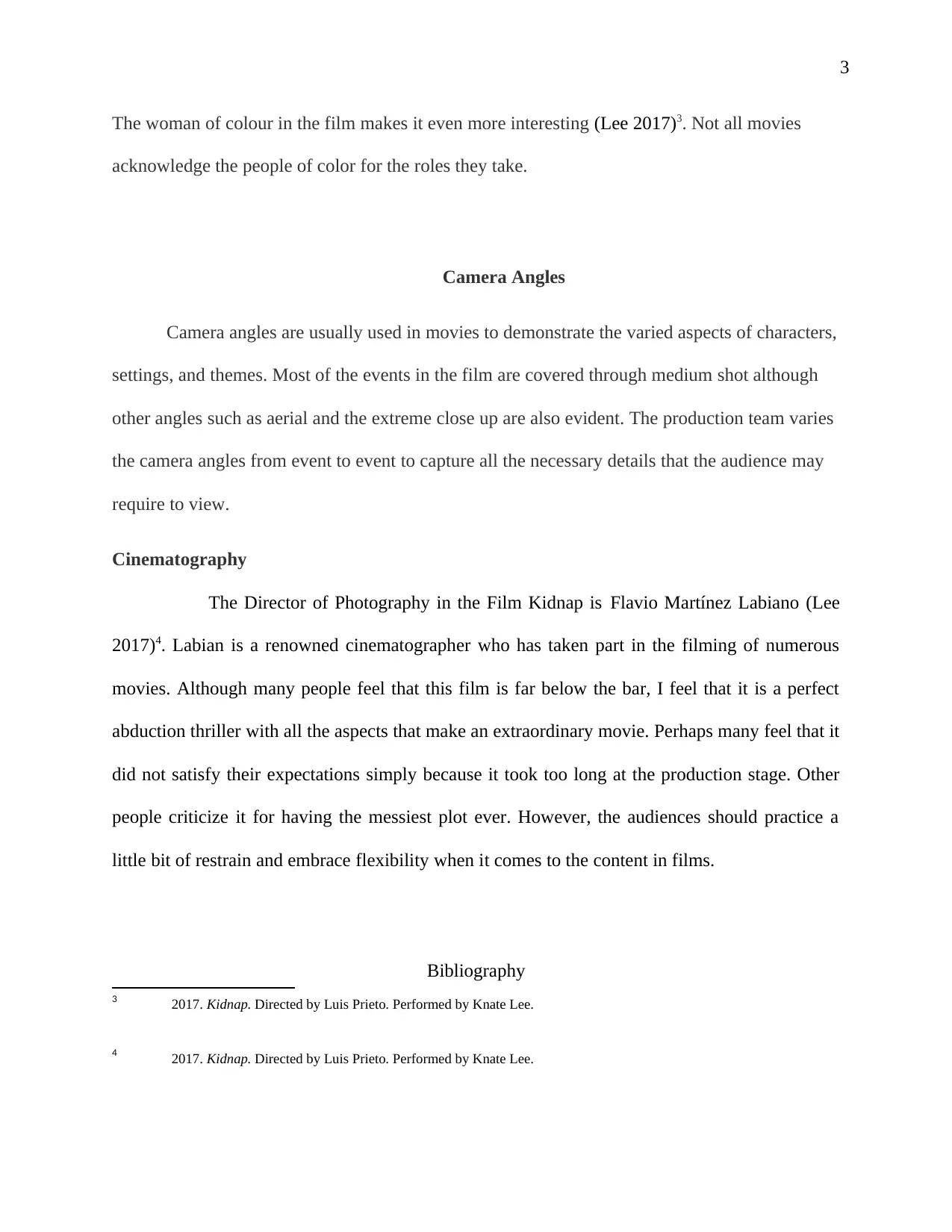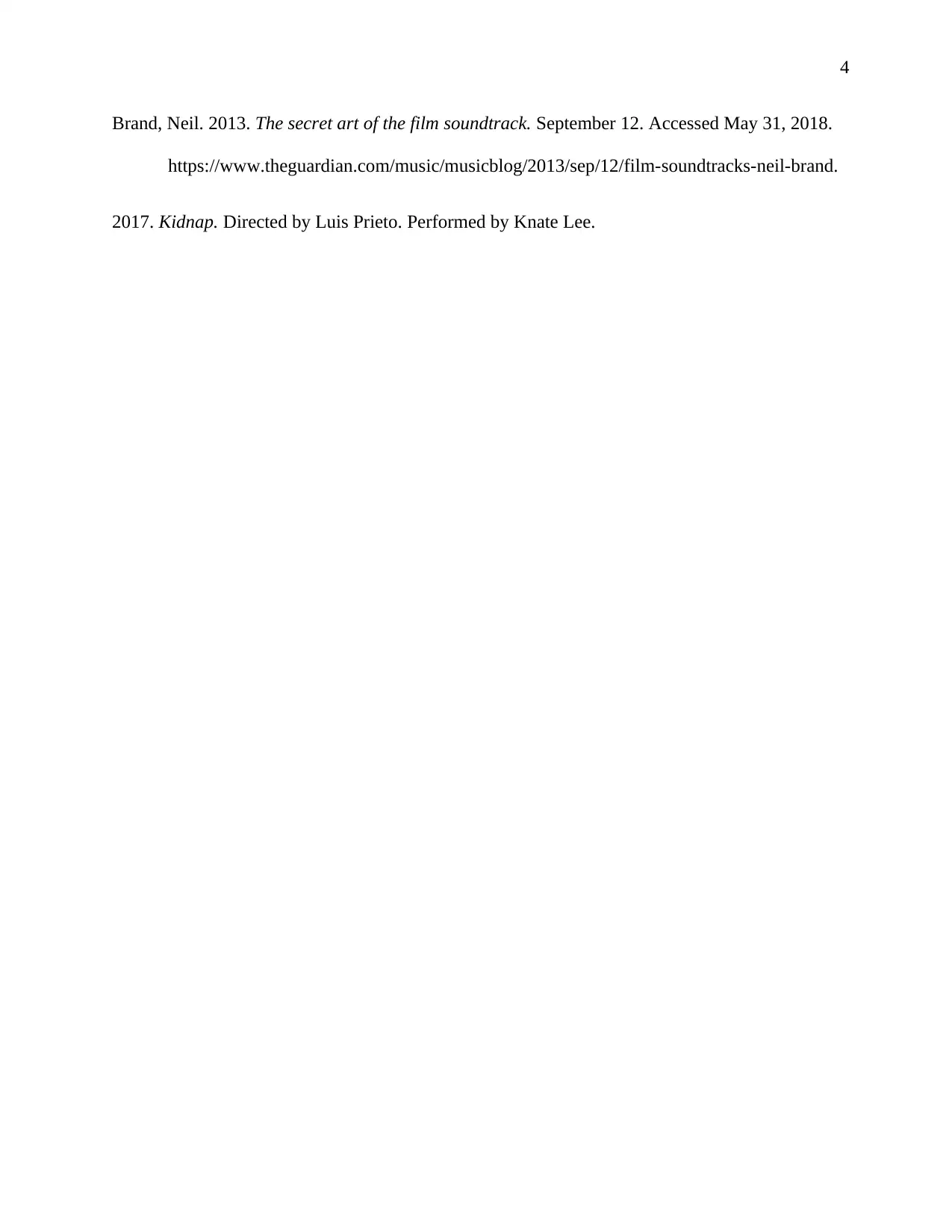Detailed Film Analysis of Kidnap: Cinematography and Technical Aspects
VerifiedAdded on 2023/06/11
|4
|608
|185
Report
AI Summary
This film analysis report provides a detailed examination of the movie 'Kidnap.' It delves into several key aspects of filmmaking, including lighting techniques, such as the use of key, fill, and backlights to highlight characters and create desired contrasts. The report also analyzes the film's soundtrack, emphasizing its importance in enhancing the narrative and creating harmony with the visuals. Furthermore, the analysis covers the use of color to convey meaning and affect audience experience, and the utilization of various camera angles, including medium shots, aerial shots, and extreme close-ups, to capture essential details. The report highlights the cinematography by Flavio Martínez Labiano, and offers a critical perspective on the film's overall impact and reception, acknowledging both positive and negative feedback, while advocating for a flexible approach to film content. The analysis references the film's director, Luis Prieto, and key contributors, such as Knate Lee.
1 out of 4





![[object Object]](/_next/static/media/star-bottom.7253800d.svg)